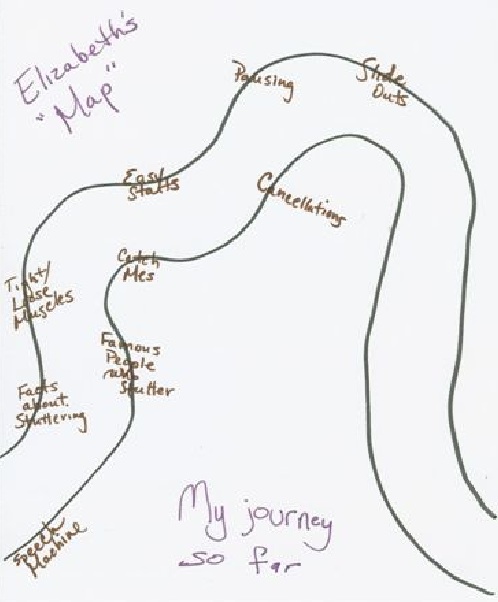A Road Map of Stuttering
 |
About the presenter: Nina Reardon-Reeves, M.S. CCC-SLP is a licensed, certified Speech-Language Pathologist. Presently, she serves several school districts near Dallas, Texas and is employed as a fluency specialist for Frisco ISD. Nina also specializes in providing stuttering therapy services to children and adolescents who stutter in her private practice. She presents interactive workshops for speech-language pathologists, early childhood educators, elementary and secondary educators, and parents at the local, state, national and international levels. She is also the co-author of the Linguisystem's publication, The Source for Stuttering; Ages 7-18, among other titles. |
A road map of stuttering
by Nina Reardon Reeves
from Texas, USA
It has always been fun and educational to have the children I work with create their own analogies to explain life concepts and how they relate to aspects of stuttering therapy.
Recently, I have had a large amount of young students who stutter in both school and private practice therapy. A "nugget" of clinical practice that has emerged from this occurrence is the development of many "maps" of learning to handle stuttering.
When the time is right, it is important for children to understand the "bigger picture" of therapy. Too many times, clinicians forget to help students understand that what we are doing at any one moment in therapy is not the only concept we have in our arsenal! So, at the appropriate stage of therapy, we discuss the overall aspects of the therapy process. Because I have always called this "mapping it out," my students and I have begun to draw actual "maps" as a visual representation of the journey we are taking; what "stops" we have already made and what we have to look forward to in the future!
The fun begins with brainstorming "what we do to get ready for a trip." Then, we list ideas for what most trips have in common. These discussions create a springboard of how learning to deal with stuttering is a journey, too. The parallels begin from there. Many of my students have created wonderful analogies of how stuttering relates to aspects of taking a trip. As a clinician, I try to stay out of "creating" a child's map. I am there to discuss various aspects of therapy, to ask questions, and to help put their thoughts into illustrations/text on a map. The map is, itself a fluid concept and "new paths" and "detours" occur frequently. Each child's map is individual and develops over time.
Example from E.R., age 8 years

SUBMITTED: September 8, 2009

